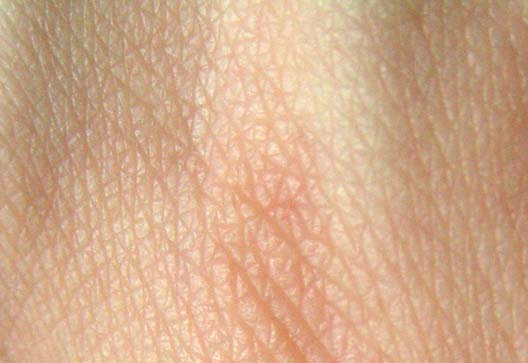
The transfer of a neurotransmitter from one type of skin cell to another (melanocytes to keratinocytes) altered electrical activity and promoted melanoma initiation in preclinical models, according to results published in Cancer Discovery, a journal of the American Association for Cancer Research.
Melanoma is a deadly form of skin cancer that develops in melanin-containing skin cells known as melanocytes. An intrinsic feature of melanocytes is their ability to secrete melanin-containing vesicles to surrounding skin cells called keratinocytes to give skin its color.
While approximately half of all melanomas harbor mutations in the BRAF gene, these mutations are present in many benign skin lesions as well.
“This suggests that BRAF mutation is not sufficient for melanoma development and raises the question of why certain BRAF-mutated melanocytes develop into cancer, while others remain benign,” said Richard White, MD, Ph.D., the senior author of the study and a physician-scientist at the University of Oxford Branch of the Ludwig Institute for Cancer Research and Memorial Sloan Kettering Cancer Center (MSK).
“Cancers exist within a community of cells from the onset,” added first author Mohita Tagore, Ph.D., a postdoctoral research scientist at MSK. “We were interested in understanding how the community of skin cells contributes to melanoma development.”
Since melanocytes are deeply embedded within a population of keratinocytes, White, Tagore, and colleagues asked whether communication between melanocytes and keratinocytes was involved in the progression of benign BRAF-mutated melanocytes into melanoma.
Using zebrafish, mouse, and human cell models, the researchers observed that the transfer of molecules between BRAF-mutated melanocytes and normal keratinocytes was critical to melanoma initiation and that it occurred almost exclusively between melanocytes and keratinocytes that were in direct contact with one another.
Researchers discovered that this communication was mediated by the neurotransmitter GABA, which was an unexpected finding given that GABA signaling is typically associated with neurons rather than skin cells, Tagore noted.
In neurons, GABA inhibits a neuron’s ability to send or receive electrical signals. The researchers observed a similar effect in skin cells, as the binding of secreted GABA to receptors on keratinocytes inhibited electrical activity in keratinocytes and led to the secretion of a tumor-promoting protein.
In addition, they found that melanoma cells had increased expression of genes involved in GABA production compared with non-malignant melanocytes.
The results suggest that BRAF-mutated melanocytes may upregulate and transmit GABA to dampen the electrical activity of neighboring keratinocytes, allow for vesicle transfer between the two cell types, and initiate the progression to melanoma, Tagore explained. She and colleagues hypothesize that molecules carried by vesicles from melanocytes to keratinocytes may trigger the secretion of the cancer-promoting protein from keratinocytes. Ongoing work is exploring this hypothesis.
“Something about normal electrical activity in keratinocytes appears to suppress the progression of BRAF-mutated melanocytes to melanoma,” she said. “Our findings indicate that some BRAF-mutated melanocytes are able to modulate this electrical activity through GABA in order to progress to melanoma.
“We typically consider electrical activity in the context of neuronal communication, but these observations implicate it in cancer development as well,” Tagore added.
“I would not have necessarily expected a neurotransmitter to be involved in the communication between skin cells,” said White. “Interactions between neurons and brain cancer cells have been reported, but here we observed neuronal-like communication occurring between two non-neuron cells.”
The findings may have therapeutic implications, as they raise the possibility of targeting GABA to treat or prevent melanoma, the authors said. However, they cautioned that additional research is needed to understand the study’s clinical applications.
A limitation of the study is that all experiments were performed in preclinical models. In addition, the findings may not apply to all melanomas due to the heterogeneity of the disease.
More information:
GABA regulates electrical activity and tumor initiation in melanoma, Cancer Discovery (2023). DOI: 10.1158/2159-8290.CD-23-0389
Journal information:
Cancer Discovery
Source: Read Full Article
